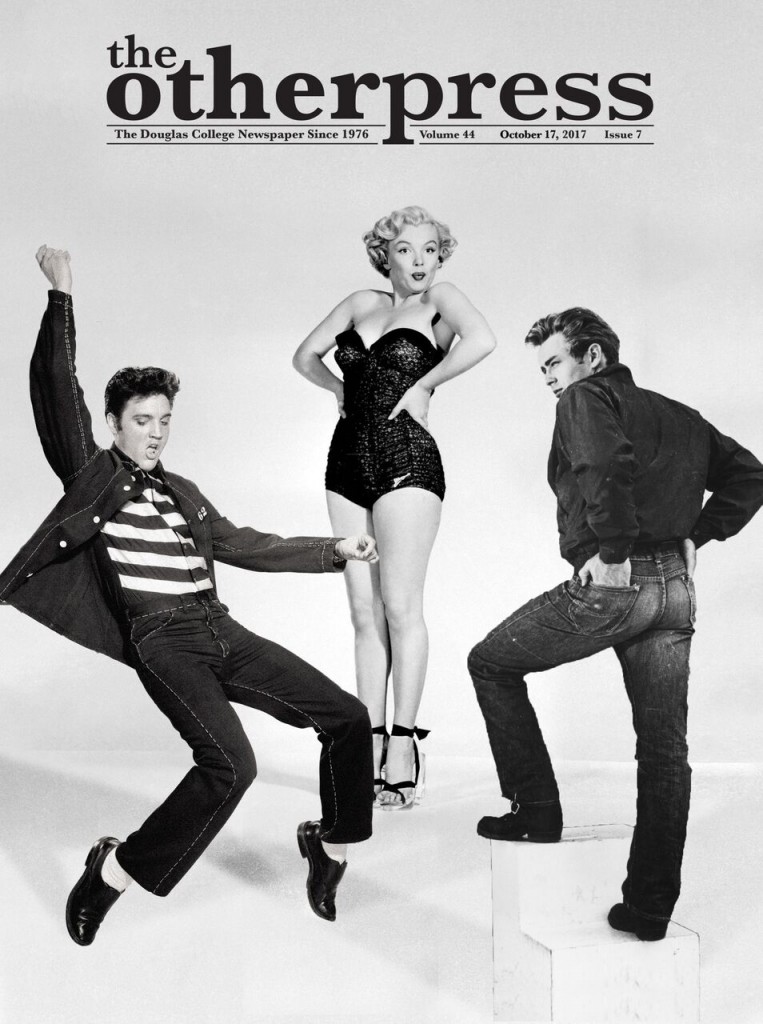
By Jerrison Oracion, Senior Columnist
A visual component has started to become a bigger part of music albums than it used to be, as nowadays some releases include a music video for every song. All of the music videos in the album can be related in a way to show a theme or create a story that would be very much like a movie. Beck’s album The Information was one of the first albums to have a visual for the whole album, which not only came with a customizable cover with stickers, but also with a visual DVD. Then, the visual aspect of an album went mainstream when Beyoncé’s two recent unannounced albums came with visuals: Beyoncé (2013) and Lemonade (2016).
The visual of Lemonade is a 1 hour and 30 minute epic that talks about race relations in the United States. Just like the album, it aired unannounced, showing on HBO before being put on Tidal. During Beyoncé’s acceptance speech after winning the Grammy Award for Best Adult Alternative Album for the album, she called it a film more than an album. There are also other recent albums that have music videos for some songs, but could have them for the other songs of the album as well. The visual of The Weeknd’s recent album Starboy (2016) would look like a 1980s science fiction film and the visual of Ariana Grande’s recent album Dangerous Woman (2016) would be about feminism.
But what would happen if other albums were also shown with a visual?
Drake–Views (2016)
Jerrison Oracion, Senior Columnist
If this album were a complete visual, we would see Drake walking around his hometown of Toronto. It would be raining in the city, so thunderstorms would be likely to occur. We’d see Toronto from various views including Yonge Street, a window in an apartment, the top of a building, a club, and Drake’s car as he drives through a major street in the city. When he gets to specific areas, he remembers a certain memory in his life and we’d get to see that through flashbacks. During one scene, he’d pay homage to a road that he often walked and he’d talk about all of the things that he did with his friends on that road.
Next, we’d see him going to a Toronto Raptors game in the Air Canada Center with a woman (though it would not be Rihanna) and the Toronto Raptors win the game. Then, we’d see him in a club and everyone in the club dancing when One Dance is playing. After that, Future would see Drake in his apartment and they’d imagine winning a Grammy Award. Drake then would see Rihanna in a cafe in Queen Street West and they’d have a conversation about being too good for each other, and questioning whether they are actually dating. Finally, he would sits on the top of the CN Tower shout out to a lot of people.
As a bonus, we would see various women in a call center and Drake dancing in bright spaces.
The Cinematic Orchestra–Ma Fleur (2007)
Rebecca Peterson, Humour Editor
Ma Fleur is a full-length studio album by the Cinematic Orchestra, a modern jazz and electronic band created in 1999 by Jason Swinscoe. This album is probably best known for the song “To Build a Home” and its coda “That Home,” which has been featured in shows, movies, trailers, and commercials ever since its release. However, the album in its entirety is something of a masterpiece, concluding in an eight-minute track titled “Time and Space.”
As a visual, I imagine the album playing out like a home video converted into some kind of fancy arthouse film, where the meaning is left ambiguous, with the focus being more on the mood evoked by the visuals, rather than a strict narrative. The album opens with the well-known “To Build a Home,” a simple piano piece backed with strings that captures the nostalgia and longing for a place to feel truly safe and happy. One can imagine their own childhood home, wherever they were happiest, perhaps portrayed in short sepia clips or black and white photographs as the song plays. The rest of the album matches this tone and mood, a sort of relaxed but evocative trance-like state, bringing to mind forgotten memories. Pieces like “As the Stars Fall” and “Into You” give a more nighttime, intimate atmosphere to the album, something you might listen to while sitting on a hill with someone you love, or maybe someone you used to love long ago. “That Home” brings us back to those images of a happier time and place, before cascading into something vast and unknown in the final piece, “Time and Space.”
The Antlers–Hospice (2016)
Chandler Walter, Assistant Editor
The Antlers’ 2009 album Hospice is a concept album that tells the story of a hospice worker who falls in love with a terminally-ill patient.
The album runs from start to end with no pauses in between, telling a complete story of heartbreak, loss, and an impending separation. The songs vary from slow and somber to somewhat hopeful, most notably in the first single released for the album, “Bear.”
The song “Bear” was released with a music video: a woman’s struggle to carry a boulder up a hill amid a bleak and snowy landscape. Fitting, as the song is about the pregnancy of a terminally-ill hospice patient, and ends with the band-members watching as the woman begins up the hill once again, the burden of the stone hers—and hers alone—to bear.
If the entirety of the album were to be made into a visual, its colours would be much like those in the “Bear” video: greys, blacks, and whites blending together in a haze, with any light from the sun casting coldly upon the struggling characters.
Much of the visual story would take place in a hospital or hospice, though the bright lights and sterile white sheets would not lend well to the mood of the album. Hospice is better depicted as a lonely hospital bed in the dark of night, with soft moonlight flooding in through thin curtains.
However dark the subject matter may be, Hospice is a beautifully-executed album, and dares to step into a realm often scratched at by musicians but rarely fully delved—that of despair, loss, and illness. A visual accompaniment of the album would not be the prettiest to watch, but it would be beautifully touching in its own unique way.
Lorde–Pure Heroine (2013)
Cazzy Lewchuk, Opinions Editor
Having written and recorded most of songs before the age of 16, Lorde’s debut album tells a beautiful journey of her teenaged emotions and talent. From the opening love lament of “Tennis Court” to the romantic ballad closer, “A World Alone,” one truly gets to know Lorde’s mind throughout the album.
If this album were to be presented visually in its entirety, we would visit her at a party, drive through roads where the houses don’t change, and explore her mindset and coping of newfound fame. Many of her songs deal with her friends, so we would follow them to the tennis courts, under overpasses, and on subways, while they talk, drink, bond, and fight out their problems. It’s a pretty unique situation to be a world-famous musician before you even have a driver’s licence, but this album conveys the experience beautifully. Lorde does her own music for her own reasons, and one feels as though they’ve just done an in-depth interview when it concludes. She’s got her own typical teen experiences (sharing beds and laughing like little kids with a special friend) and some less relatable celebrity ones, and we would get to see that contrast visually. (She may not always be smiling, but the notes from her admirers on Tumblr fill the dashboard all the same.)
Lorde is a typical teen girl who also happens to be a superstar. She doesn’t think she’s better than anyone else, and she knows that everything’s cool when we’re all in line for the throne. She also tells us that we’ll never be royals. We know it, and we feel it with—and for—her.
Melanie Martinez–Cry Baby (2015)
Brittney MacDonald, Life & Style Editor
Melanie Martinez’s debut album Cry Baby takes inspiration from the idea of the deception of innocence, so the music itself is fairly upbeat or childlike, but with a darker message in the lyrics themselves. Flowing seamlessly between the Electronic and Alternative genres, this album tells a very distinct and sinister story if you follow the progression of the song list.
If this album had a visual element it would begin with showing an isolated young girl with a difficult home life. Though her family has the appearance of perfection, it simply isn’t, and this leaves her feeling alone (“Dollhouse” and “Sippy Cup”). She is then kidnapped and held captive by a man who, over a period of time, gives her some form of the love and affection she craved, so she then develops Stockholm Syndrome (“Tag, you’re it”). However, as her own feelings manifest, she begins to exhibit extreme jealousy, not only over his relationship with the other captives he holds, but also over all his personal relationships outside of the one he has with her. It is at this point she decides to kill him rather than lose him (“Milk and Cookies”). After he’s dead, she falls in and out of relationships with older men who value her only for her youthful beauty (“Mrs. Potato Head”), but as that fades away she has a breakdown and she’s left alone and addicted to pharmaceuticals (“Mad Hatter”).


